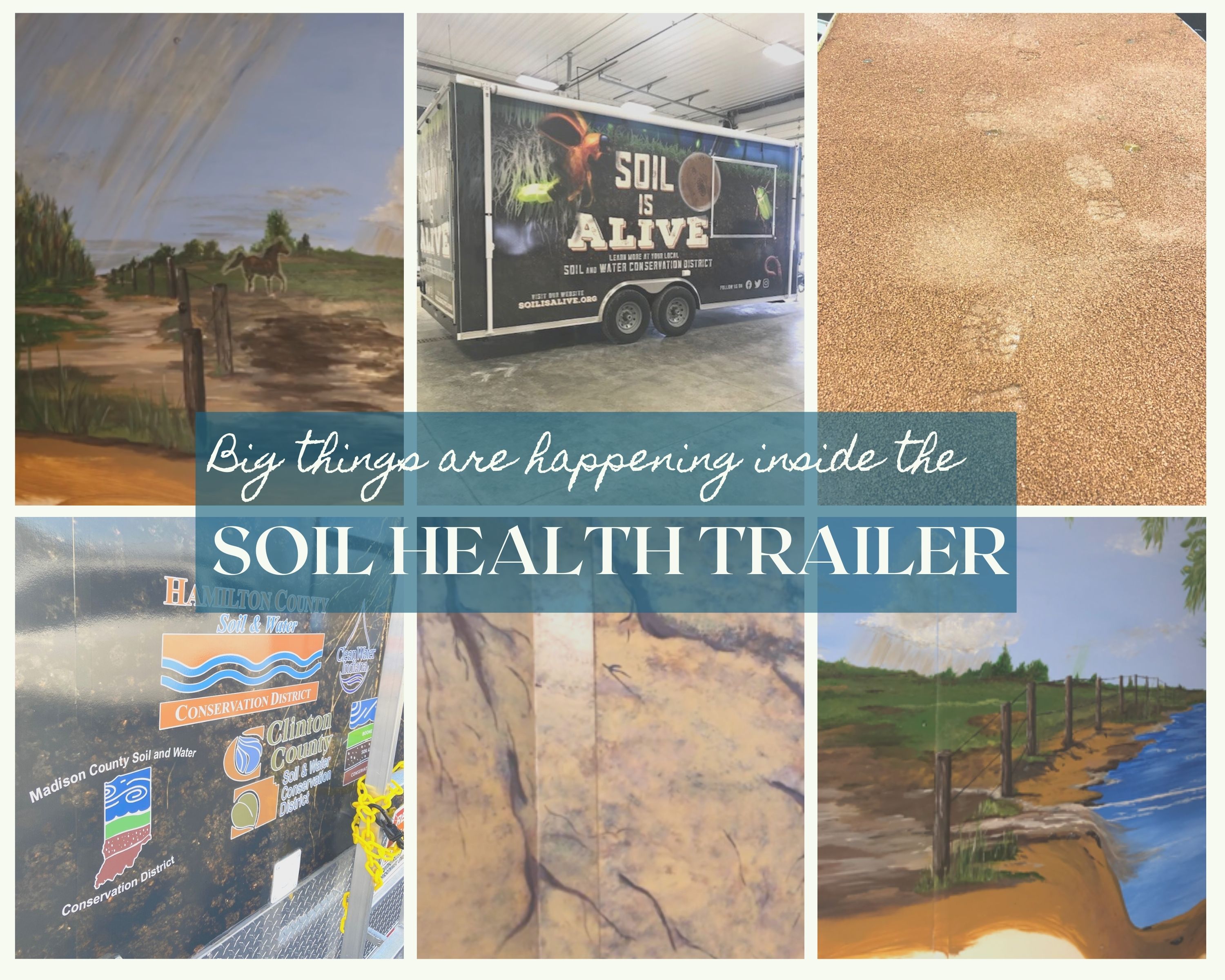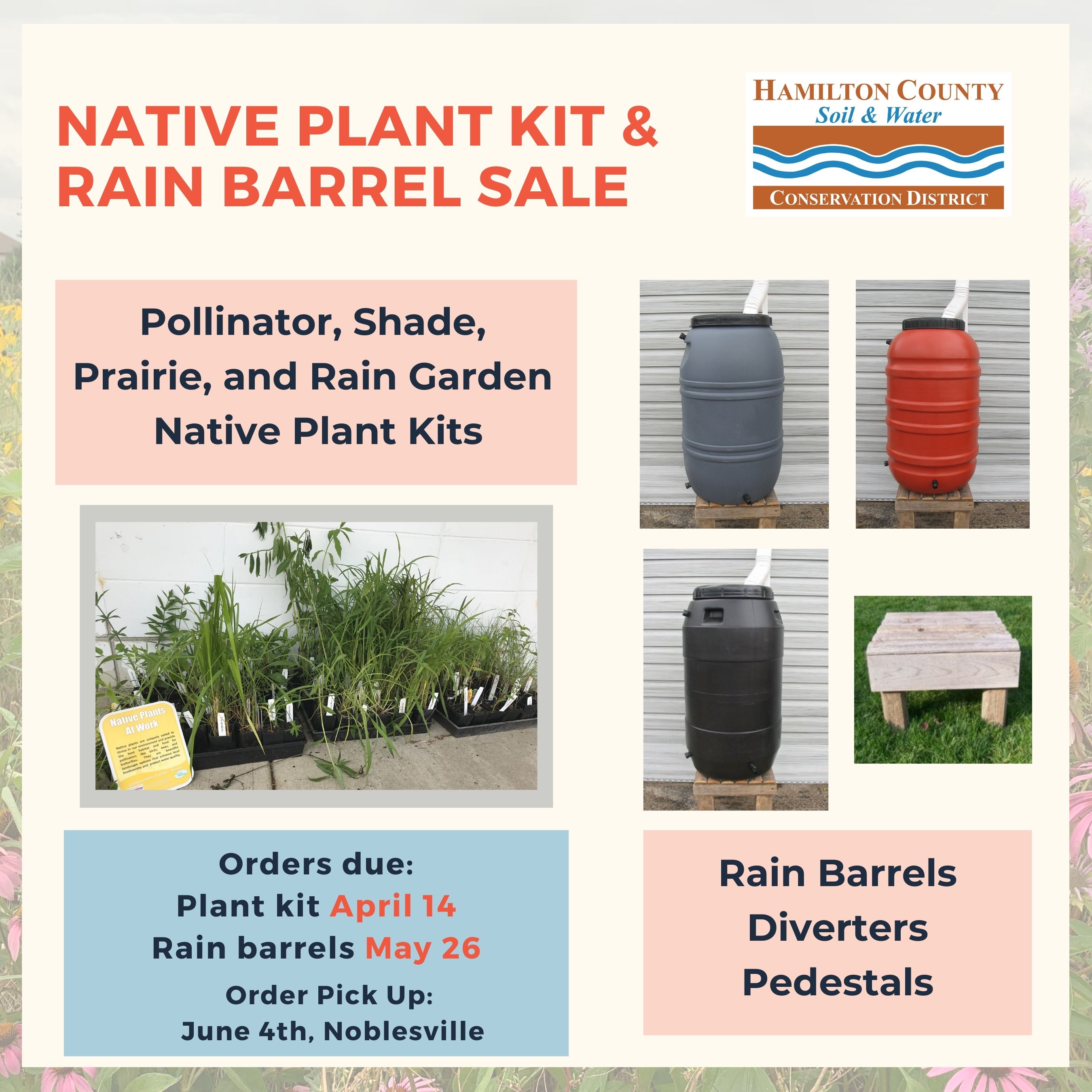|
In this issue: -
Water Testing Groundwater - Do Trees Get Thirsty in the Winter?
- Soil Health Trailer
- Conservation Efforts Continue
- Help to Tree-Plenish Carmel
- Winter Seeding of Natives
-
District News & Updates -
Native Plants Winter Landscape -
Winter Management Check-list -
Conservation Choices - Sourcewater Protection -
2021 HIP Goals -
Strike Team Callout |
| |  | |
|
|
|
Water Testing Important for Groundwater Groundwater—its depth from the surface, quality for use as drinking water, and chance of being polluted—varies from place to place. Much of Indiana groundwater is safe for human use. The Indiana Department of Environmental Management (IDEM) reports that 80% of wells tested in Indiana are clean, clear, and safe for consumption without treatment. However, groundwater contamination can and does happen, so well owners must be vigilant in protecting water supplies. Well owners should test their water regularly and maintain wells to safeguard their drinking water. Because we value our independence in Indiana, private wells are not regulated. This means it is your responsibility to ensure you have safe drinking water from your well.
Testing your well water is an important step to safeguard the water for our community and to provide yourself with security that you’re consuming safe drinking water. Well testing can be confusing because there are many options and owners do not always know what to test for. The main thing to consider is what may be influencing the groundwater in your area. Knowing what is going on the ground within a mile radius around your well will give you a good idea of what may influence your water. |
| |
|
|
|
Do Trees Get Thirsty in the Winter? Do trees and other plants get thirsty in the winter? Well, it depends on the weather conditions, but I would say usually, especially newly planted trees. Older established trees have a more extensive root system and are more resilient to dry winters. Since we recently had a tree sale this past Fall, I will concentrate on “new” trees as opposed to older established trees, however even older trees can experience winter drought issues.
Although trees go dormant during winter months, their root systems still need adequate moisture and can suffer from lack of it. Regarding evergreen trees, which keep their needles throughout the winter, watering can be even more important, as they lose moisture through their needles faster than deciduous trees, which lose their leaves in the Fall. |
|
|
|
|  | Educational content planning and development is underway, we are looking to bring a talented artist on board to help create the realistic soil profile within the trailer. Could it be you? Contact Diane for more information. |
| | | Conservation Efforts continue on Indiana's Farms Amid Challenging Year The USDA’s Natural Resources Conservation Service (NRCS) in Indiana continued its conservation work across the state despite a tough 2020 marked with a pandemic and several natural disasters. The agency helped farmers and forest landowners implement conservation practices on their working lands, which help conserve natural resource such as soil, water and wildlife as well as boost producers’ bottom lines. Additionally, NRCS launched new online tools that increased the efficiency, effectiveness and delivery of crucial programs.
“Despite facing a myriad of challenges caused by the COVID-19 pandemic in 2020, Indiana NRCS was able to have a lasting impact on the working lands throughout the state,” said Jerry Raynor, NRCS State Conservationist in Indiana. “Our entire Indiana NRCS staff worked tirelessly to find creative ways to work with producers in the state and continue implementing conservation practices alongside our farmers and forest landowners. This year showed that no matter the obstacles, NRCS will continue helping people to help the land.” Click the button below to learn more about key highlights from 2020. |
| |
|
| |
|
|
Help to Tree-Plenish Carmel We are helping to spread the word for a local sophomore at Carmel High School (CHS) as she is undertaking the largest Tree-Plenish project in the nation!
Every year, CHS uses about 12.3 million sheets of paper, and Serve Carmel hopes to offset this by working with a national nonprofit called Tree-Plenish to plant 1500 trees for residents in the Carmel area. Although 12.3 million sheets of paper sounds like a lot, it is under the national average for a school of CHS’s size, and we know this Tree-Plenish event will improve our local environment even further.
Please spread the word, request a tree for your home or business, gift one to a friend, and help Carmel shine on the national stage. Feel free to contact Summer Tullai with any questions. |
|
|
|
|
| Winter Seeding Natives After a long, cold winter the sunshine and warmer temps of spring usually inspire thoughts of flowers and new plantings and excitement over gardens and growth. But, did you know you don't have to wait till spring to get started? In fact, fall and winter can be the best time to start your native planting from seed. Fall and winter seeding, sometimes called frost seeding or dormant seeding, takes advantage of the cold, moist winter weather. Learn more about winter seeding below. |
| |
|
|
| Hamilton County Soil & Water Conservation District News |
| |
|
|
 | | | | Native Plants for the Winter Landscape When it comes to starting a wildlife garden project, most gardeners tend to focus on the spring and summer months, when wildlife is very active. But fall and winter are the most critical times to be supporting wildlife. If you want a diverse array of wildlife on your property you need to make sure there’s ample food available in the weeks before winter’s arrival, so the animals can consume and store as much nutrition as possible. |
| | |
|
|
|
Winter Invasive Management Check-list Tired of Invasives? Winter is a great time to manage invasive plants or get a head start on spring management. Several invasive species are easier to identify in the winter and early spring because they’re evergreen or they produce leaves before native plants do. Often the green you see in a native landscape in early March is composed of invasive species. You can mark these species when they’re easy to identify, and then in the spring you can start managing them. Click the link below to learn about several species that are easily identified during the winter months as well as species you can treat now. |
| |
|
|
| Conservation Choices - Sourcewater Protection Sourcewater protection is the act of understanding and limiting the negative impact from choices and management of the land and structures within our community to decrease the impact to our drinking water. It is important for every single person to make it a priority and take steps to help protect our drinking water. For most of us there are simple things that can be done to protect the sourcewater, for others that manage large tracks of land or complexes, this may take a bit more work, but is worth it to protect our drinking water for your family, friends, community and future generations. |
| | |
|
|
| Hamilton County Invasives Partnership Sets Goals for 2021 After being established in 2019, the Hamilton County Invasives Partnership (HIP) has spent 2020 accomplishing projects including a survey of the top ten most invasive plants, several invasive species surveys, educational presentations, and strategic planning. In the last few months, The Education and Technical Committees have put the finishing touches on the goals for 2021 and you can now learn more here. |
|
|
| Strike Team Call-out The Hamilton County Invasives Partnership (HIP) is launching the strike team this spring. A strike team is a group of volunteers educated about invasive species management and identification that goes out in the field and manages invasive species throughout the county. |
| |
|
| |
|
|
Looking to get more involved in 2021? Learn more about becoming a volunteer or an affiliate member on our website. |
|
|
|
Affiliate Members Affiliate membership dollars support conservation and education in our county! Join us in thanking these great supporters! We have updated our affiliate levels. Visit our affiliate membership page to see how you can support your SWCD. Friend of Conservation Kim Gauen Jennifer Hensley Terry Luley John South Beth Williams Craig Wind Compassionate Conservationist Karen Hymbaugh Zac Sprunger Conservation Hero Shelly Brown Phil Flanagan Steve Hilger
Becks Superior Hybrids Champion of Conservation |
|  |
|
|
|
|
| Hamilton County Soil & Water Conservation District 1717 Pleasant Street | Noblesville, IN 46060 317-773-2181 | soil.water@hamiltoncounty.in.gov |
| |
|
|
|